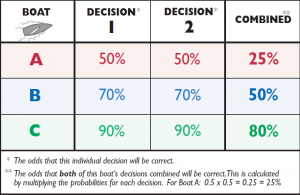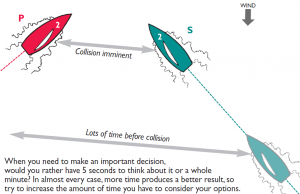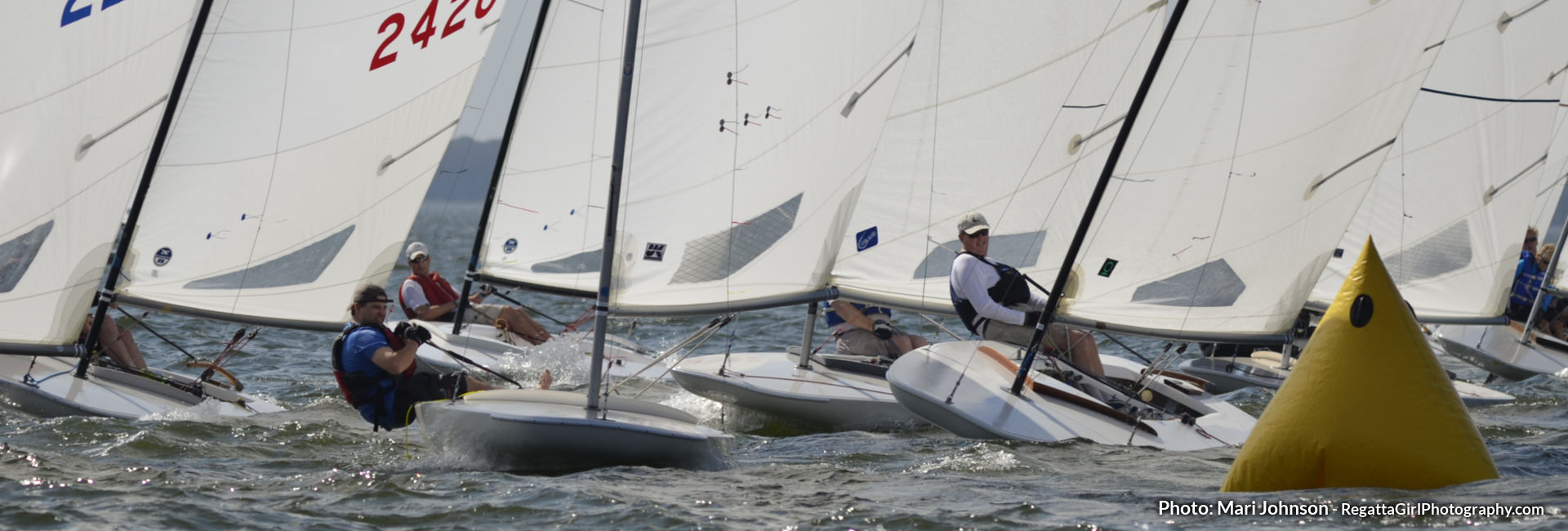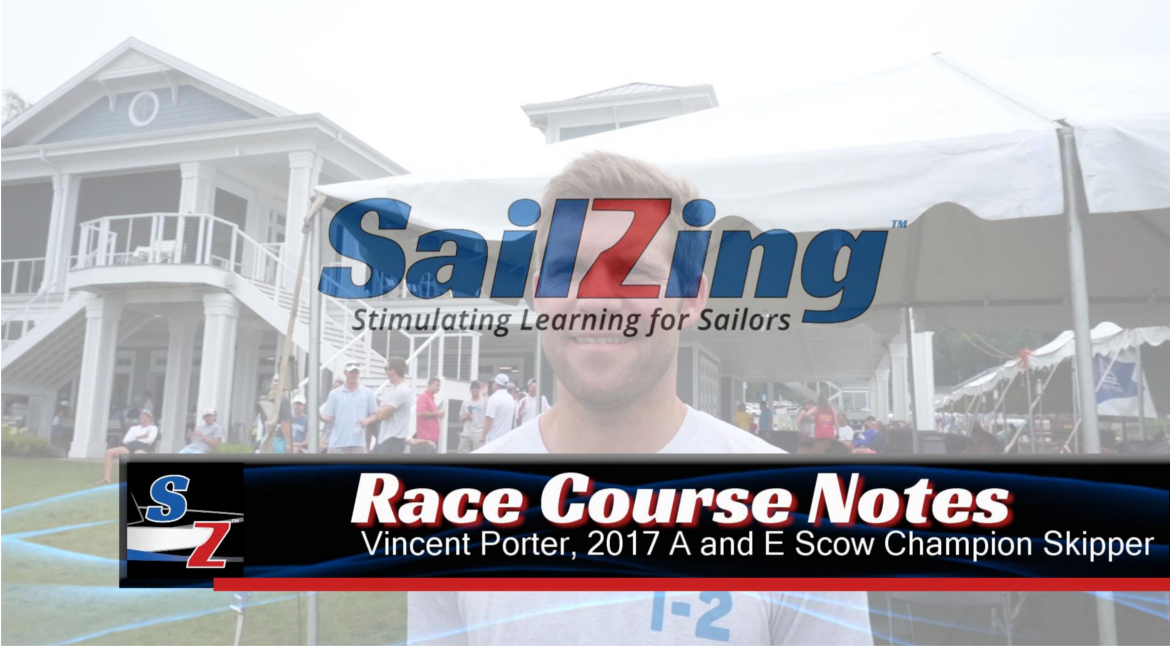You can increase the percentage of decisions that lead to successful outcomes. For example, if you make the right decision 70% of the time, it might be possible to increase that to 75% or 80%. Even this small increase of 5% or 10% could make a huge difference in your race result when you apply it to hundreds of decisions.
Dave Dellenbaugh, Speed and Smarts #117
Dave Dellenbaugh dedicates the entire issue #117 of Speed and Smarts to help sailors make better decisions. He also discusses high percentage decisions in issue #127. We were impressed with these issues and decided to summarize some key points for our readers, with Dave’s permission. If you want the full articles, go to the Speed and Smarts website and order back issues. Better yet, subscribe.
The Power of High-Percentage Decisions
A section in issue #127 uses simple probability to illustrate the power of stringing together high-percentage decisions. Let’s assume you make two decisions in a race that have an impact on the outcome.
- If each decision has a 50% chance of being right, your cumulative probability of success is .5 x .5 or 25%.
- If each decision has a 90% chance of being right, your cumulative probability of success is .9 x .9 or 80%.
Considering the number of consequential decisions in a series of races, you can see why even a small increase in the probability of success for each decision can pay huge benefits.
See Dave’s discussion of probabilities in issue #127 here.
How to Make Better Decisions
In “Find Time to Make Better Decisions,” in issue #117, Dave reminds us that we make better decisions if they are not rushed. In sailing, being rushed seems unavoidable, but he offers several practical ways to gain time.
- Define goals. Having overall goals lets you weigh options more quickly. For example, an overall goal might be to sail conservatively. With this goal in mind, you will find it easier to decide whether or not to continue to a corner on the lifted tack.
- Keep your eyes open. With your head out of the boat, you can anticipate upcoming situations and buy time. Dave gives the port-starboard crossing example, but you can likely recall dozens of your own. Mark roundings are huge decision times, so anticipating way ahead for these makes a lot of sense.
- Make a strategic plan. A strategic plan, such as “play the left side” or “connect the dots” also helps you weigh options more quickly. If you’re not sure of a plan, just use basic strategy guidelines, like “sail to the next shift,” to weigh options.
- Collect information. Better decisions come from better information. Look around constantly and ask questions like “where’s the next shift or puff,” “where are the other boats,” or “how is my boatspeed?”
- Identify options. If you have a solid list of options, it’s easier to make quicker, better decisions. You may not have time to brainstorm options during a race, but with experience you can build a repertoire of options for any given situation.
- Evaluate, learn, improve. After each race, evaluate your key decisions and note areas for improvement in your thought process.
See Dave’s discussion of buying time in issue #117 here.
Team Decision-Making
Issue #117 discusses using crew to improve your decisions. We won’t summarize this section, but it’s worth reading if you want to make better decisions on crewed boats.
Insights From Case Studies
Issue #117 covers six case studies of common decisions, such as port-starboard crossings, cutting inside at leeward mark, and strategy decisions. Here are some highlights from the case studies:
- Contingency planning. Don’t just focus on current conditions. To buy time for your next decision, think about what could happen and your response. For example, you’re sailing on port behind another port tacker to leeward. What will you do if the other boat tacks to starboard?
- Consider risk/reward. Some decisions, like deciding to cut inside at a leeward mark, are high risk and high reward. It might work, but you could lose a lot if it doesn’t. Avoid high-risk decisions early, and consider them for later in the race if you are behind.
- Use pre-race time to the fullest. Strategy decisions are heavily dependent on information gathering. The more information you collect before the race, the easier it will be to formulate a strategy and adapt during the race.
- Use a 10-second rule. In an unexpected situation, it’s tempting to rely on impulse. Not every situation requires an instant response. Sometimes, a short delay in making a decision gives you a better chance to weigh options and gather data.
Related Content:
Pre-Race Routine: Get a Leg up on the Competition – lists information to collect to help make decisions
Improve Your Average Score – One Race at a Time | Sailing World – good list of conservative strategy principles
Sailors Helping Sailors
Will you share your knowledge with your related Comments below?







